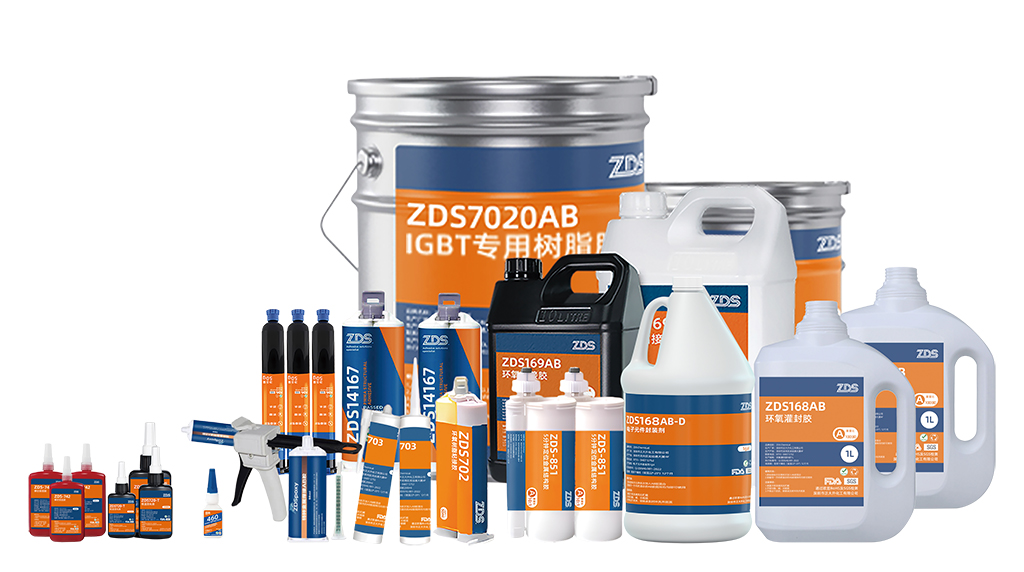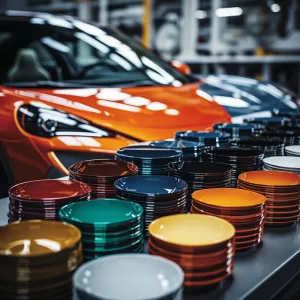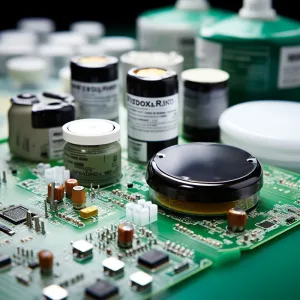Adhesive Solutions

Adhesives offer outstanding performance across a broad spectrum of assembly applications. The right type and grade of adhesive can bond almost any material, whether animal, vegetable, or mineral. Adhesives can efficiently bond or join nearly anything. They work on wood, textiles, stones, metals, plastics, and biological tissues. The only exceptions to this are liquids and gases.
ZDS™ adhesives are available in a wide range of industries, and we can also tailor the formulation to your requirements. With more than 30 years of adhesive experience, we can provide you with professional adhesive solutions.
Viscosity Variations
Low Viscosity: Flowable liquid adhesives easily penetrate small assemblies’ mating joint faces. They also fill gaps, cracks, and surface flaws through a wicking process.
High Viscosity: Pasty or gel-type adhesives can fill gaps, cavities, and imperfections that may vary over the length of an assembly. These adhesives are best for bonding and filling large gaps where clearances vary between parts.
Simplified Processing
Types of Adhesives
Acrylic
Also known as acrylates, methacrylates, and structural acrylics.
Anaerobic
Known as gasket resins, retainers, threadlockers, and pipe-sealers.
Cyanoacrylate
Often called super-glues or instant glues.
Epoxy
Available in single-part heat-cured and two-part formulations.
MS Polymer
The latest PU technology for water use and low odor.
Polyurethane
Available in both standard and hybrid technologies.
Silicone
A classic adhesive sealant still widely used.
UV Curable
Clear adhesives cured after exposure to ultraviolet light.
Industry Application Adhesive Solutions
Adhesive Type
Specialized Adhesives
Cyanoacrylate Adhesives
Ultra-fast setting glues are ideal for quickly bonding small parts. They work well on rubber materials.
Two-Part Acrylic Adhesives
Versatile formulations provide strong, durable bonds. They come in twin barrel cartridges or as separate components to mix.
Single-Part Epoxy Adhesives
Heat-cured adhesives bond quickly. They match other processes and final assembly adjustments. They offer complete working control before curing.
Heat-Cured Epoxy Adhesives
Perfect for complex, multi-part assemblies like heat exchangers and radiators. It provides smooth fillets at all interfaces, like soldered joints.
Two-Part Epoxy Adhesives
Versatile formulations that cure fast or slow, based on job needs. These adhesives cure at room temperature without needing external heat.
Structural Adhesives
Adhesive Sealants
UV Curable Adhesives
Conclusion
FAQ
What materials can adhesives bond?
Are adhesives easy to process and handle?
What are Cyanoacrylate Adhesives best used for?
How do Two-Part Acrylic Adhesives work?
What are the benefits of Single-Part Epoxy Adhesives?
When should I use Heat-Cured Epoxy Adhesives?
Heat-cured epoxy adhesives are perfect for complex multi-part assemblies like heat exchangers and radiators. They create smooth fillets at interfaces, similar to soldered joints.
What makes Two-Part Epoxy Adhesives versatile?
Two-part epoxy adhesives can be chosen for fast or slow application and curing speeds, depending on job requirements. They cure at room temperature without needing external heat, offering flexible solutions.
What are Structural Adhesives suitable for?
Structural adhesives such as epoxies and acrylics are superior for fastening components in high-performance applications. They can replace welding, riveting, and screwing, especially useful for bonding high-tech composites.
How do Adhesive Sealants work?
Adhesive sealants bond components while filling gaps and sealing, protecting against moisture and water ingress. Traditional silicones remain popular, but newer formulations like polyurethanes and MS polymers offer additional qualities, like solvent-free and low odor properties.






